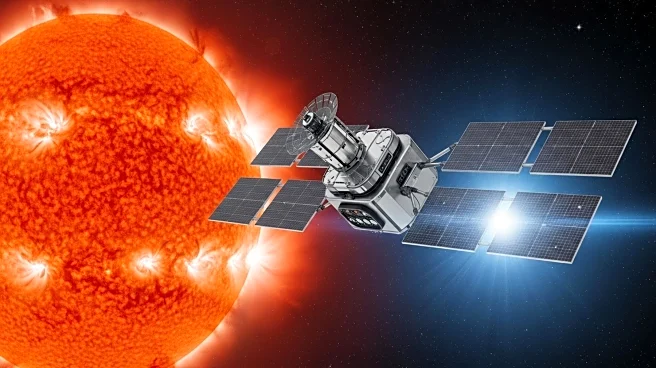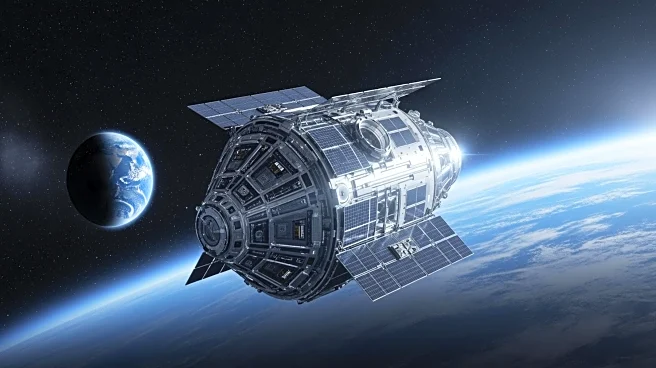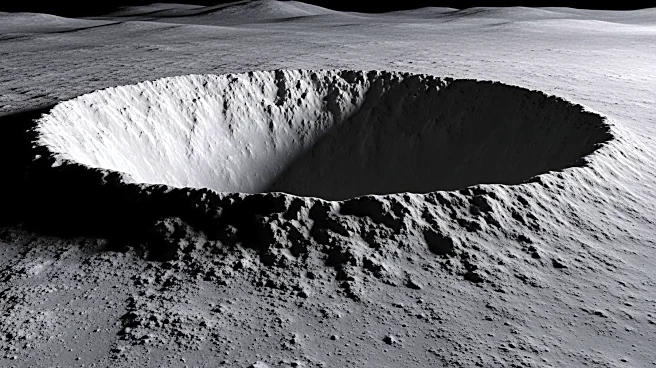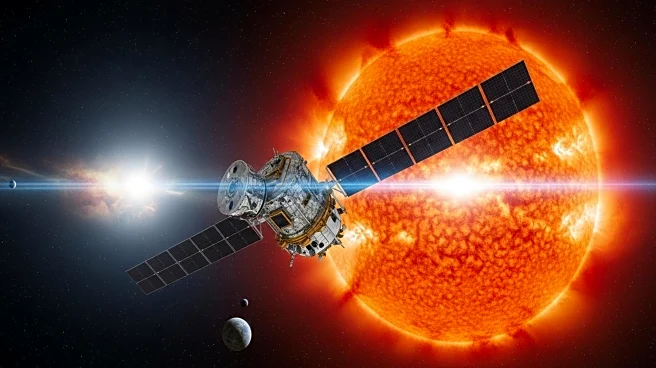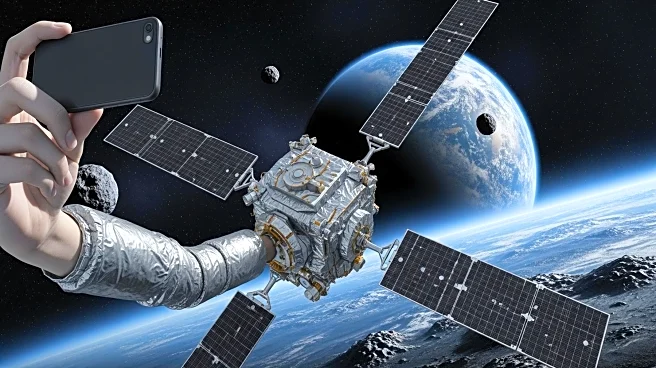What's Happening?
NASA is set to launch the Solar Polar-orbit Observatory (SPO) in January 2029, aiming to explore the Sun's polar regions, which remain largely uncharted. The mission will utilize a Jupiter gravity assist
to achieve a high-inclination orbit, allowing unprecedented observation of the Sun's poles. These regions are crucial for understanding the solar magnetic cycle and the fast solar wind, which influences space weather throughout the solar system. The SPO mission will carry a suite of remote-sensing and in-situ instruments to capture detailed images and data, providing insights into the Sun's magnetic fields and plasma flows.
Why It's Important?
The exploration of the Sun's poles is vital for advancing solar physics and improving space weather forecasts. Understanding the solar magnetic cycle and the fast solar wind can lead to better predictions of solar activity, which affects satellite operations, communication systems, and power grids on Earth. The SPO mission's findings could enhance models of the heliosphere, benefiting spacecraft engineering and astronaut safety. By collaborating with other solar missions, SPO aims to provide comprehensive coverage of the Sun, contributing to global scientific knowledge and technological advancements.
What's Next?
Following its launch, the SPO mission will undergo several Earth flybys and a Jupiter encounter to achieve its target orbit. The mission is expected to last 15 years, covering both solar minimum and maximum periods, including the anticipated polar magnetic field reversal around 2035. SPO will work alongside other solar missions to form an extensive observational network, offering nearly global coverage of the Sun. The data collected will be crucial for refining existing models and developing new theories in solar physics.
Beyond the Headlines
The SPO mission represents a significant step in international collaboration in space exploration. By providing a top-down view of the Sun, it will help scientists trace solar material and magnetic structures across the solar system, improving our understanding of space weather events. The mission's success could pave the way for future explorations of other celestial bodies, enhancing our ability to safeguard critical technologies on Earth.
